Among the indoor flowers, one of the most popular is Sansevier. She is valued for her unpretentiousness and ease of care. Thanks to its long leaves, the plant serves as a wonderful decoration of the interior.
Material Content:
Sansevier flower: types and varieties
Sansevier is a stemless evergreen plant of the Agave family. Due to the shape of the leaves, in common people it was called "pike tail."

The plant has long leaves, capable of reaching a height of more than 1 meter.
Their colors can vary from green tones to dark brown.
In nature, there are more than 60 varieties of this houseplant.
The most popular types of sanseviera, which are grown indoors, are:
- Great Sansevier. It can reach a height of up to 50 cm. It has massive and wide leaves up to 18 cm in diameter. They acquire light green tones with transverse dark green stripes.
- Sansevier three-way. It is perhaps the most common type of flower. It has xiphoid leaves pointed to the top, more than a meter high. The color of the leaves is green, with transverse ribbed stripes of dark color. Along the edges, a characteristic edging along the entire length of the yellow sheet. During the period, it can produce peduncles twice in the form of panicles collected from small flowers.
- Sansevier is cylindrical. It features erect green leaves of a cylindrical shape. In diameter, they can be up to 3 cm, wider below, narrowed upward, and at the end there is a point. During flowering, it produces inflorescences from small flowers collected in a brush.They can be cream and red.
- Sansevier graceful. It has leaves in the form of tubules, pointed to the top. Growth they can reach up to 35-40 cm. The leaves are light green in color with transverse stripes of brown or beige color.
There are also some varieties of this indoor flower, which are descended from a three-lane sansevier.
You can highlight the most popular:
- Hanni
- Laurenti;
- Futura
- Robusta
- Nelson.
The very first grade of sansevier is Laurenti.
Important! Sansevier Hanni is a poisonous plant. If children or pets live in the house, you must be careful and put the pot with the plant in a place inaccessible to them.
Home Care
An unpretentious evergreen plant will be able to grow a completely inexperienced grower.

Although Sansevier does not require special attention to himself, he still needs certain growing conditions:
- She is better suited to dry indoor air.
- Does not need spraying and high humidity.
- It is necessary to clean the leaves of dirt particles with a wet towel.
- Watering is done as the topsoil dries up.
- Do not allow water to stagnate in the outlet, otherwise it will rot.
- Use water in advance, at room temperature.
In summer, watering should be no more than 1-2 times a week. In winter, they must be reduced to 1 time per month. In order to get a strong houseplant and achieve its flowering, it is necessary to carry out proper care for the sansevier.
Temperature features, lighting, humidity
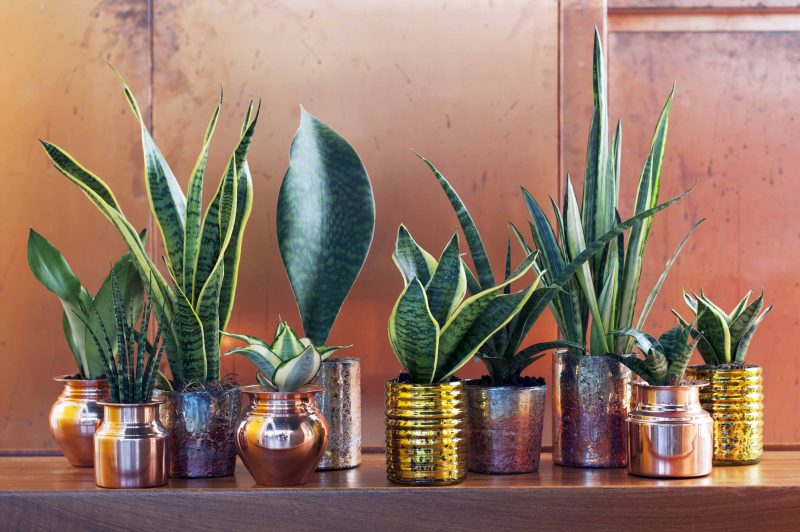
- The optimum temperature for a flower is 15-18 degrees. The plant is hardy, can easily exist at a temperature of 5-6 degrees, the main thing is to ensure that its root system does not rot. In the summer, the pike tail easily tolerates temperatures up to 28 degrees.
- The flower prefers bright sunlight, most importantly, avoid direct sunlight in order to avoid burns. In the winter months, a flower needs to be arranged with artificial lighting, prolonging daylight hours. It can exist in partial shade and shadow. But if such conditions persist for a long time, then the leaves of the plant begin to fade and growth slows down.
- Sansevier does not need constant spraying. It is only necessary to wipe its leaves with a damp cloth from dirt and dust particles.
Soil requirements
The soil flower prefers light and loose. The shops have a variety of soils. You can buy soil for cacti.
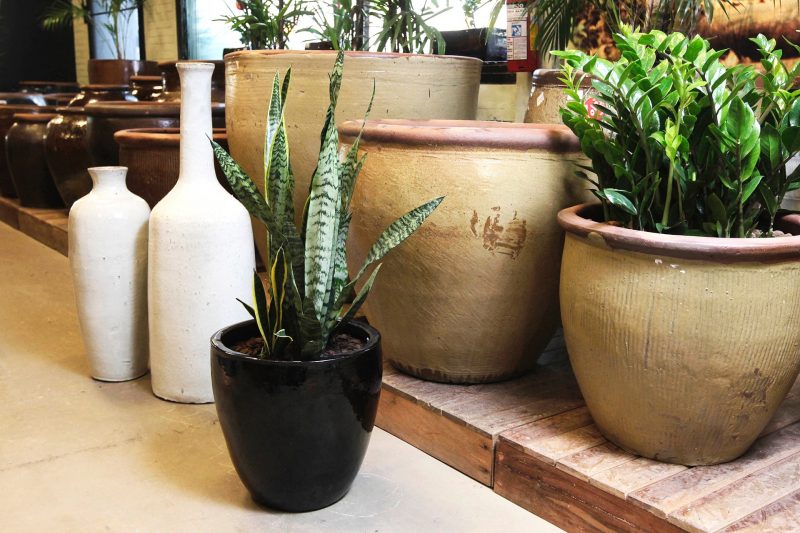
But it is better to cook it yourself in equal parts:
- turf land;
- sheet land;
- peat;
- humus;
- sand.
At the bottom of the pot, it is necessary to organize good drainage from expanded clay, broken slate or small pebbles.
Watering and feeding
It is necessary to water Sansevier with settled water at room temperature as the soil dries in the pot. It is constantly necessary to ensure that water does not enter and does not stagnate in the outlet. This can lead to rotting of the roots or disease of the plant.
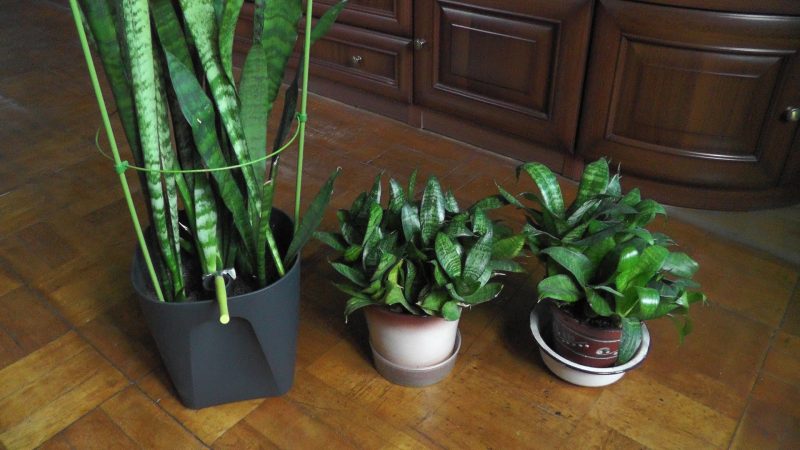
The frequency of watering in the summer should not exceed 1-2 times a week. In winter, watering is reduced to 1-2 times a month.
Indoor flower needs regular dressing with the onset of spring, with regularity twice a month. For this, liquid mineral fertilizers are suitable, which are applied during irrigation along with water. In winter, top dressing must be stopped.
Plant transplant
The pike tail is transplanted, focusing on its appearance. If the flower slowed down, it means he needs a new pot. It has a powerful root system, so you need to pick up a cache-pot made of durable material. A clay pot is a good option.
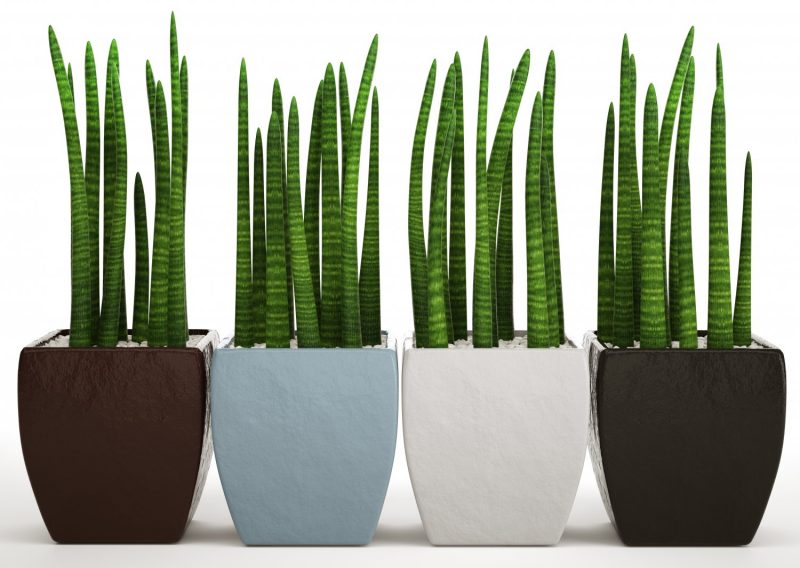
- Young plants can be replanted annually.
- Adult bushes are transplanted as the roots fill the entire volume of the pot 1 time in 3-4 years.
In order to transplant the sansevier yourself, you must first water it abundantly for easier extraction from the old pot.
- Prepare a new planter larger by 1-2 cm.
- In the soil, make a deepening, place a flower in it, slightly compacting the ground.
- After transplanting, the pike tail should be shed well with water.
- So that long leaves do not bend and fall, you can bind them to the handle, until the plant finally takes root.
Important! A transplant is best started in early spring or summer, during the active growth of a flower.
Reproduction of Sansevier flower
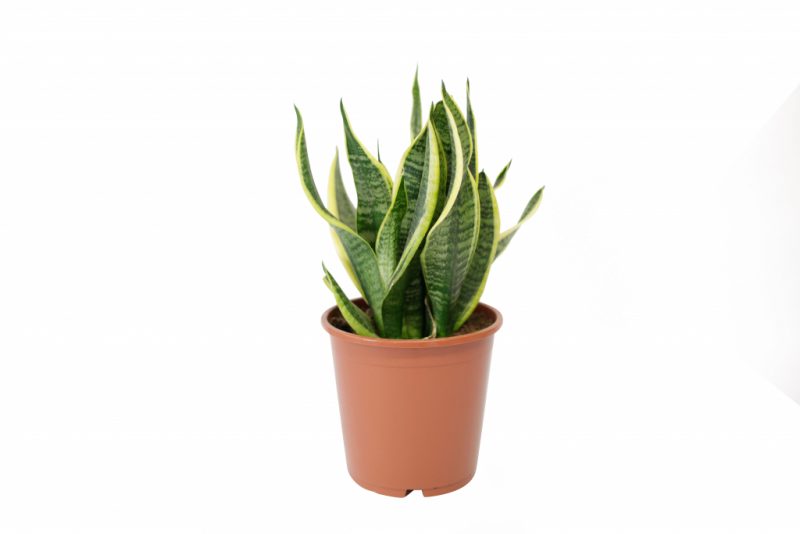
Reproduction can be carried out in several ways:
- Dividing the rhizome. The easiest way. If several bushes have formed in one pot, they are dug up and planted in separate containers. The main bush can be divided into several, cutting with a sharp knife rhizomes. They are planted in pre-prepared pots with soil.
- Division of the sheet. This reproduction is also simple, has a good survival rate. To do this, a leaf is cut and divided into several parts of 5 cm each. Leaf cuttings are dried for 2 days, then planted in boxes with wet sand. They are deepened into the soil by 1 cm and moisturized well. You can plant leafy cuttings in separate pots in a month, when they give roots.
- The seeds. The seed method is rarely used, it is more troublesome. In prepared boxes with soil, the seeds should be spread out evenly on the surface, to top them with a soil layer of not more than 0.5 cm. Watering should be carried out with a spray bottle so as not to “wash” the seeds. On top of the box is covered with film or glass. Every day it is necessary to remove the film for ventilation. A week later, after the appearance of the first shoots, the film is removed. Seedlings begin to dive in a month in separate pots.
Pests and diseases - how to treat?
Sansevier is very rarely exposed to diseases and pests.
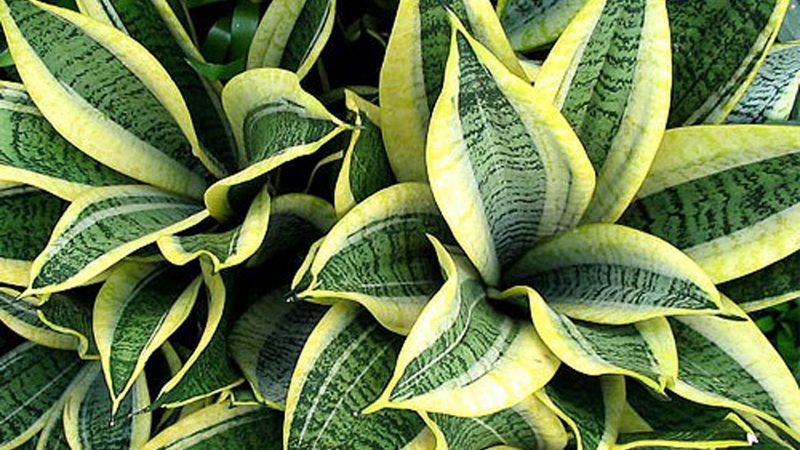
In rare cases, due to improper care, pests can appear:
- Spider mite. After the appearance of the insect, the leaves of the flower become dull, fall off. At the first sign, it is necessary to treat the leaves with a soap solution or fungicides.
- Thrips can be seen by staining the foliage in brown. Insects appear on the bottom of the leaf, are hardly visible. In pest control measures, chemical solutions for leaf treatment are suitable.
- The powdery worm settles at the base of the flower and sucks out the juice and nutrients from it. Leaves become soft, dry and fall off. First, pests must be collected from the plant, then treated with Karbofos or Bordeaux liquid.
What problems can the flower grower face?

An unpretentious plant when grown at home can confuse the grower with some problems:
- Light spots formed on the leaves. The reason may be a low room temperature or direct sunlight. It is necessary to provide the flower with optimal lighting and temperature.
- Leaves or rosette rot. The reason is the abuse of heavy watering or the accumulation of water in the outlet. It is necessary to remove all affected parts of the plant and reduce the number of waterings.
With proper care of a houseplant, even an inexperienced grower will not have problems in growing it.












